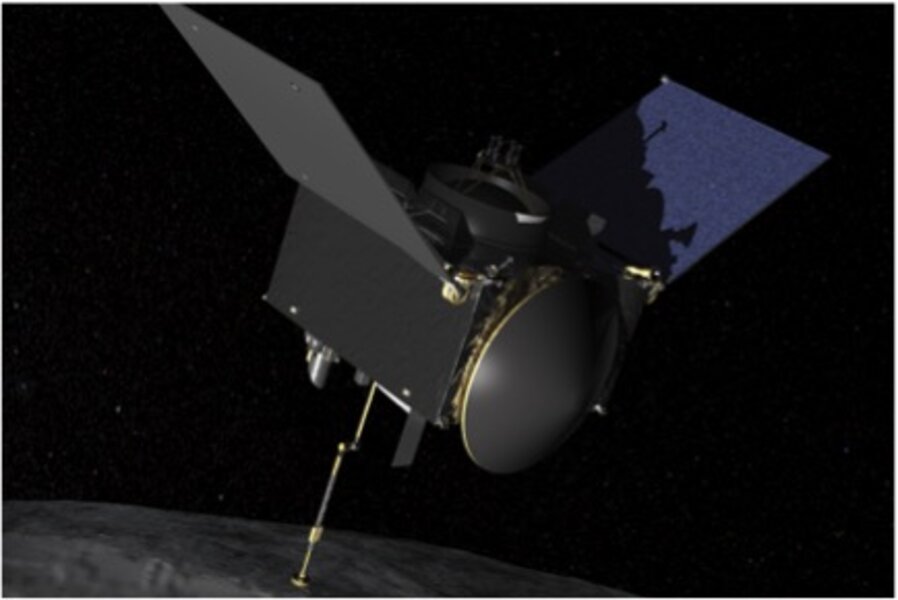NASA almost ready for first-ever asteroid hunt
A spacecraft designed to catch up with an asteroid and vacuum up some of the dust on its surface seems like something out of science fiction, but NASA says it's ready for a test drive.
Lockheed Martin announced Wednesday that engineers have finished assembling a spacecraft designed to take the first-ever samples of an asteroid. The US aerospace company is ready to test the OSIRIS-REx spacecraft to ensure it can successfully undergo the physical buffeting of a rocket launch and a trip through space, the Denver Post reports.
"This is an exciting time for the program, as we now have a completed spacecraft and the team gets to test drive it, in a sense, before we actually fly it to Bennu,” said Rich Kuhns, OSIRIS-REx program manager at Lockheed Martin, in a news release.
The tests aim to "shake-and-bake" the spacecraft, Erin Morton from the University of Arizona, which is leading the investigation for the OSIRIS-REx, tells The Christian Science Monitor. Some tests will simulate launching, which is actually the most stressful part of the mission for the spacecraft. Other tests will also expose OSIRIS-REx to both extreme heat and cold at the same time, to simulate when the craft will have one side facing the sun in space.
After five months of testing at a facility south of Denver, the launch is set for September 2016 at NASA's Kennedy Space Center in Florida. The mission will send the OSIRIS-REx to an asteroid called Bennu, which scientists chose for its carbon-rich surface, in the hope of understanding how life could begin in the solar system, Ms. Morton told The Christian Science Monitor.
The OSIRIS-REx will not land on the asteroid, but it has a probe that resembles a mosquito proboscis that will take the sample.
"We're going to touch the asteroid for about five seconds and vacuum part of it up," Morton told The Christian Science Monitor.
Engineers plan on welcoming the OSIRIS-REx back to Earth after it circles the sun and returns with its sample. Researchers can use what they learn from the OSIRIS-REx mission in the following mission to an asteroid, planned for the early 2020s.
NASA's Asteroid Redirect Mission aims to use a robot spacecraft to capture a nearby asteroid and place it in a "stable orbit" around the moon. The asteroid would furnish astronauts with a "proving ground" for Mars landings, helping NASA develop new technologies for sample collection, rendezvous and docking, and transporting large masses, the agency says.
In addition to helping answer questions about the origin of the solar system, the mission could also advance a defense project, so to speak, that has concerned some astronomers.
The asteroid missions will aid in research that will help develop "planetary defense techniques to deflect dangerous asteroids and protect Earth if needed in the future," according to NASA's website. NASA ultimately wants a system that could reroute a comet, should one large enough to cause problems fly too close to Earth.






